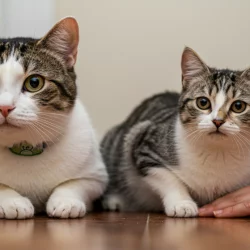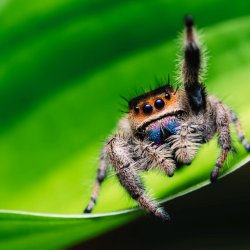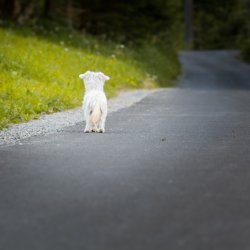Weird Sleep Habits In The Animal World
Humans definitely possess a variety of odd sleep habits, but have you ever wondered about the rest of the animal kingdom? Every creature on this earth has their own acquired sleeping patterns, often influenced by the environment in which the animal sleeps. For example, over time humans evolved to sleep 6-8 hours a day, construct shelters for protection from elements and to sleep in communities to reduce dangers from threats like wolves, bears, and marauding people. While pertinent to us, sleep habits and sleep requirements show much variety in other species.

License: Creative Commons image source
1) Giraffes - A Big Animal with Small Sleep Needs
Majestic and graceful animals, giraffes possess quite unique sleeping patterns. They are considered prey animals and since they are so large it takes them a bit of time to get up off their feet. This may or may not have anything to do with the amount of time required for them to get a good nights rest. Their metabolism and frequent rests while standing allow them to spend less time unaware and asleep, making quick escapes easier. Giraffes sleep in intermittent periods, totaling only couple hours a day, and sometimes less than one hour. When they do sleep, giraffes curl up on the ground and contort their long necks, resting their heads on hind legs. This might be one of the most abnormal sleeping patterns on planet Earth, and certainly a striking contrast for a such a large animal.

License: Creative Commons image source
2) Brown Bats - A Small Animal with Big Sleep Needs
Brown bats also have one of the weirdest sleeping patterns in the animal kingdom. These tiny creatures can live up to 33 years, and spend about 19 hours of the day hanging upside down in a sleeping state. Like most bats, they are nocturnal and most active at dusk when they go look for food. Right before bed they nestle up to a cave ceiling or branch, lock in their talons, and fall asleep upside down with their colony. In contrast to giraffes, these small animals require a very large amount of sleep.
3) Great White Sharks - May Not Even Sleep
These apex predators have one of the least researched sleeping patterns in the entire animal kingdom. It actually is unknown whether or not sharks really sleep in the way we know it, or how often they need rest. What is known is that they have been witnessed in some sort of idle state, whether sleeping or simply resting. Also, great white sharks need to keep moving to stay alive, as their movement is the only thing drawing oxygen into their gills for respiration. It is believed they function like some other sea mammals whose brains shut down halfway, partly resting and partly swimming and watching for threats.

License: Creative Commons image source
4) Albatross - They Sleep and Fly
The albatross catches Zzz’s essentially the same way as a great white shark. This seabird has a wingspan of 12 feet and has often been seen sleeping while flying. Even at 25 miles an hour this bird glides through the air sleeping, thanks to its ability to lock its wings. This habit likely developed to allow the albatross to take long voyages and spend extensive time over water without landing, which would make them vulnerable to large sea predators.

License: Creative Commons image source
5) Seals - Some sleep with Half Their Brain
Seals are strange creatures as it is, their sleeping habits are even stranger. Eared seals exhibit the same traits believed to allow sharks to sleep, where half of the brain controls functions while the other half sleeps. This allows these air-breathing mammals to sleep underwater, without actually waking when they surface for air or steer around (with only one side of their body). However, this deprives them of REM sleep, so occasionally they surface on land to nap and catch up on needed REM rest. Earless seals, on the other hand, sleep underwater but must wake occasionally to breathe. They also sleep on land or with their noses just above water to catch REM sleep.

License: Creative Commons image source
6) Otters - Hold on and Hunker Down
Otters are very cute and smart creatures. Similarly, sea otters may sleep holding paws, forming “rafts” to avoid separating from their clans. They sleep in two periods, at night and for a time during the afternoon. These clever little animals also rest using their long tails to hook themselves on to seaweed at the bottom of the body of water in which they are swimming, anchoring their bodies down but leaving their heads above water. This way they can take a nap without having to worry about waking up in a different location.

License: Creative Commons image source
7) Dolphins - Sleep with One Eye Open
Dolphins give the saying "sleep with one eye open” a more literal meaning. Dolphins in the wild swim around with one eye open and when eye close while they are sleeping, again using the technique of sleeping with half their brain at a time. This allows them to get a little bit of shuteye while still being aware of their surroundings and potential predators. In captivity, they have been shown to sleep with both eyes closed however, using their tails to stay close to water’s surface for air. The Indus river dolphin is even stranger; it sleeps only 4-60 seconds at a time to keep safe!
Of all the animals in the animal kingdom, which ones sleep the most & least?
The answer to who sleeps the most is a close tie between the koalas, the bats, and the opossums. These animals all spend 20 hours of the day sleeping. So don't be disappointed if you happen to walk into a zoo and don't get to see one of these creatures out and about.
On the other hand are super creatures that sleep very little. Along with giraffes who only need between 10 minutes and 2 hours of sleep a day, is the thrush bird. While in migration, this bird takes short bursts landing on a tree branch to take only 8 second naps. What a drastic stretch between eight seconds and 20 hours!
As we can see, animals across the planet have their own different sets of weird sleeping habits and time requirements. There are animals that sleep for a few seconds at a time, all the way up to 20 hours. It is very interesting to consider how adaptable and unique Earth’s fauna is, and often awe inspiring to learn of habits quite different from own. Perhaps your pooch’s scratching on the carpet and walking around in circles before laying down or it's humanlike habit to lie down on your latex bed isn’t as odd as you thought it was!
More to Read:
Previous Posts:



